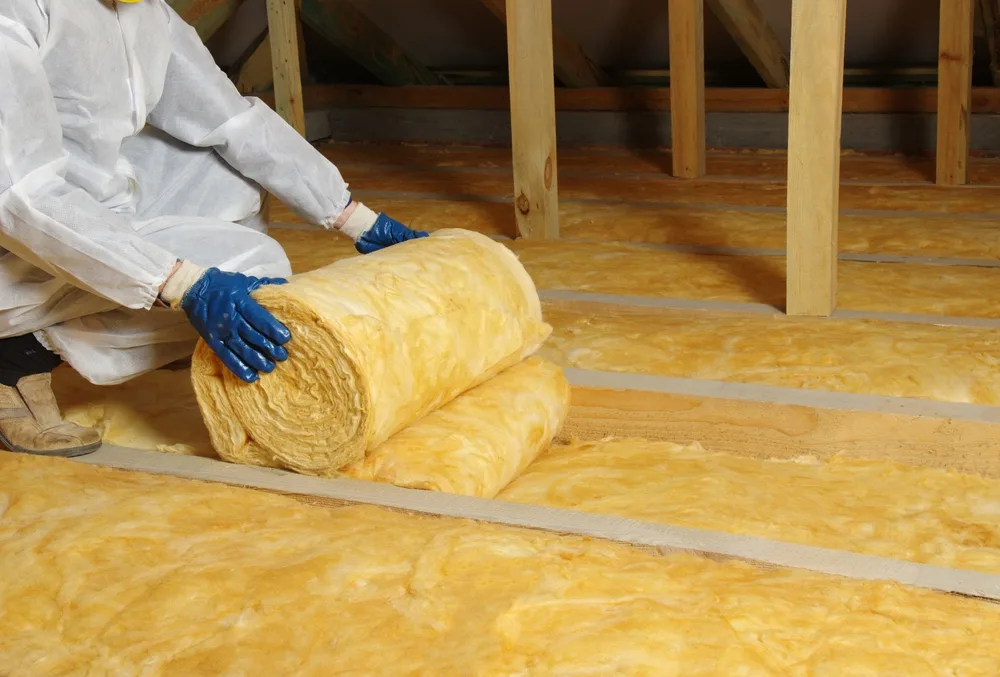Estimated reading time: 5 minutes
Last updated on August 15th, 2025 at 03:59 am
When I first started working with insulation, I was amazed at how much misinformation was out there. These myths don’t just confuse homeowners—they can lead to uncomfortable living spaces, higher energy bills, and even unnecessary expenses. Let’s bust some of the most common insulation myths, so you’re equipped to make smarter decisions about your home.
What You’ll Learn
- Why insulation isn’t just for cold climates.
- How adding more insulation isn’t always better.
- The truth about insulation materials.
- Why insulation alone won’t stop drafts.
- How insulation degrades over time and what to do about it.
- Why even new homes might need insulation upgrades.
- Why DIY insulation might not be the cost-saver you think it is.
Myth 1: Insulation Is Only for Cold Climates
This one comes up all the time. People assume insulation’s main job is keeping heat inside during winter. Sure, that’s part of it, but insulation works year-round. In summer, it helps block heat from entering your home. Without it, your air conditioner has to work overtime. That’s like making your wallet sweat along with you.
Pro Tip: No matter where you live, insulation is key for maintaining comfortable indoor temperatures and reducing energy bills. If you’re in a hot climate, check out Basement Insulation: Stop Heat Loss Where It Starts for ideas to maximize efficiency.
Myth 2: More Insulation Is Always Better

I’ll admit, it’s tempting to think that piling on insulation is the golden ticket to energy savings. But here’s the deal: there’s a point where adding more doesn’t help. It’s called the law of diminishing returns, and it’s as frustrating as it sounds.
Instead of cramming your attic with extra insulation, focus on the quality of the installation and addressing air leaks. Think of it this way: putting on two winter coats won’t help if there’s a hole in your shoes.
Related Reading: Find out why focusing on proper insulation placement matters in The Hidden Costs of Poor Insulation.
Myth 3: All Insulation Materials Are the Same
This one makes me cringe a little because it’s so common. Not all insulation is created equal. Fiberglass, spray foam, cellulose, and rigid foam all have different uses and benefits. Choosing the right material depends on your home’s needs.
Fiberglass: Affordable and reliable for walls and attics.
Spray Foam: Great for air sealing and tricky spots.
Cellulose: Eco-friendly and effective.
Rigid Foam: High R-value for exterior walls and basements.
Quick Tip: Choosing the wrong material can waste money and energy. Check out Spray Foam vs. Fiberglass to learn which might suit your home.
Myth 4: Insulation Stops Drafts

I wish insulation could do everything, but it’s not a superhero. While it reduces heat transfer, it doesn’t stop air leaks. That’s where air sealing comes in. Without sealing those pesky gaps around doors, windows, and ducts, your home can still feel drafty—even if it’s fully insulated.
Pro Tip: Insulation and air sealing are like peanut butter and jelly. Pair them for maximum comfort and efficiency. Need tips? See Winter-Proofing Your Home with Expert Insulation Tips.
Myth 5: Insulation Lasts Forever
I hate to break it to you, but insulation doesn’t last forever. Over time, it can degrade due to moisture, pests, or settling. Fiberglass can lose its fluffiness, and even spray foam can deteriorate if not installed properly.
Regular inspections can help you catch problems early. If you notice signs of moisture or sagging, it might be time for an upgrade.
Quick Tip: Curious if your insulation needs attention? Read Top Signs Your Home Needs Insulation Upgrades Today.
Myth 6: New Homes Don’t Need Insulation
This one surprises a lot of people. Just because your home is new doesn’t mean it’s well-insulated. Builders often stick to minimum code requirements, which aren’t always enough for optimal energy efficiency. Adding extra insulation in the attic or basement can make a big difference.
Pro Tip: Upgrading insulation in new homes can enhance resale value. Check out How Insulation Adds Value to Your Home for Resale.
Myth 7: You Can Install Insulation Yourself
If you’re a DIY enthusiast, I get the appeal of tackling insulation yourself. But here’s the reality: improper installation can lead to gaps, compression, and wasted materials. It’s one of those projects where hiring a pro can save you time, money, and headaches.
Fun Fact: DIY insulation disasters are so common, they’ve inspired their own category of online memes. Let’s keep your home out of that hall of shame.
Related Reading: Learn why professionals are worth it in DIY vs. Hiring a Pro: Why Insulation Contractors Are Key.
Wrapping It Up
Insulation might not be the most glamorous topic, but getting it right can transform your home. By debunking these myths, I hope I’ve helped you avoid common pitfalls and make smarter choices. Whether you’re insulating for the first time, upgrading an older home, or maintaining what you have, the key is understanding how insulation works and taking a strategic approach.Ready to take the next step? Contact me at Leroy Insulation for a consultation. Together, we’ll make your home more comfortable, energy-efficient, and myth-free.



